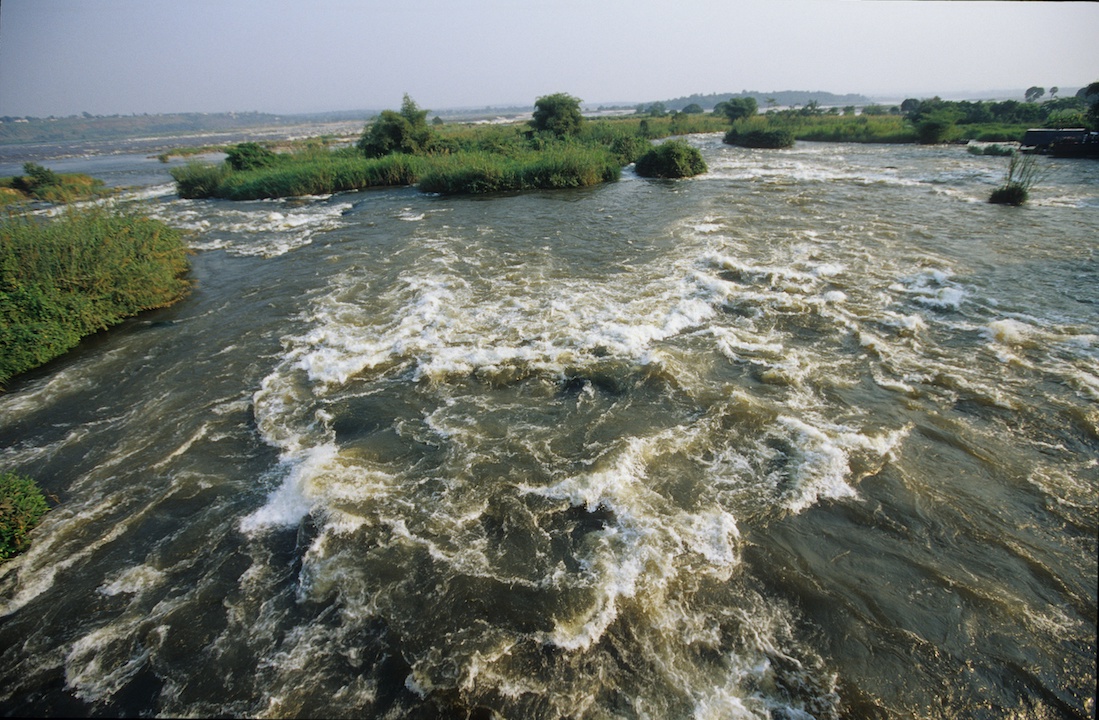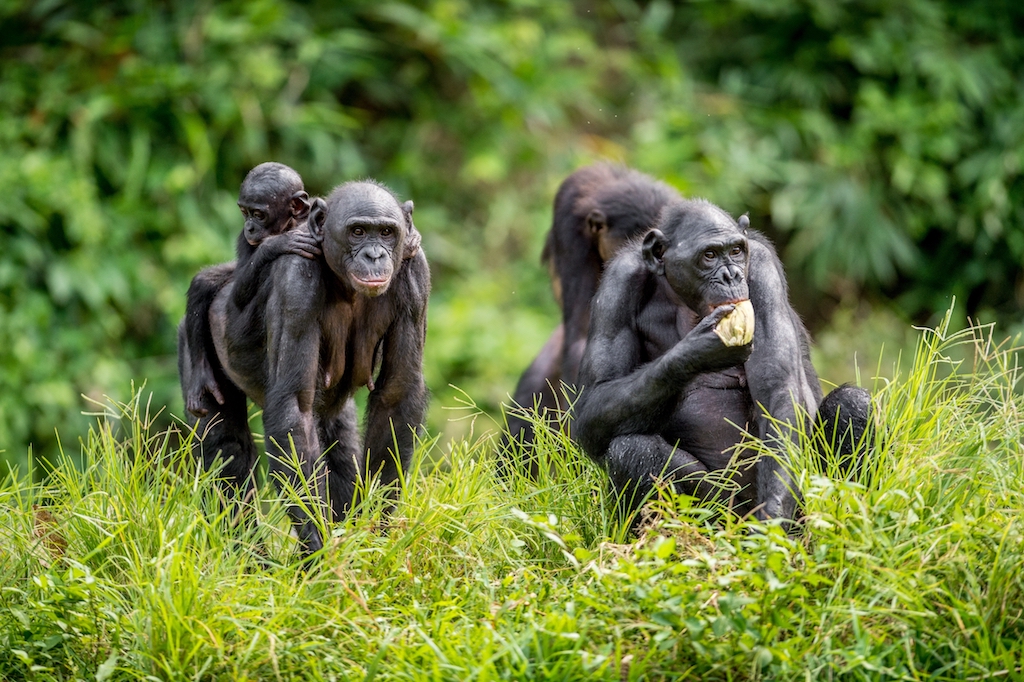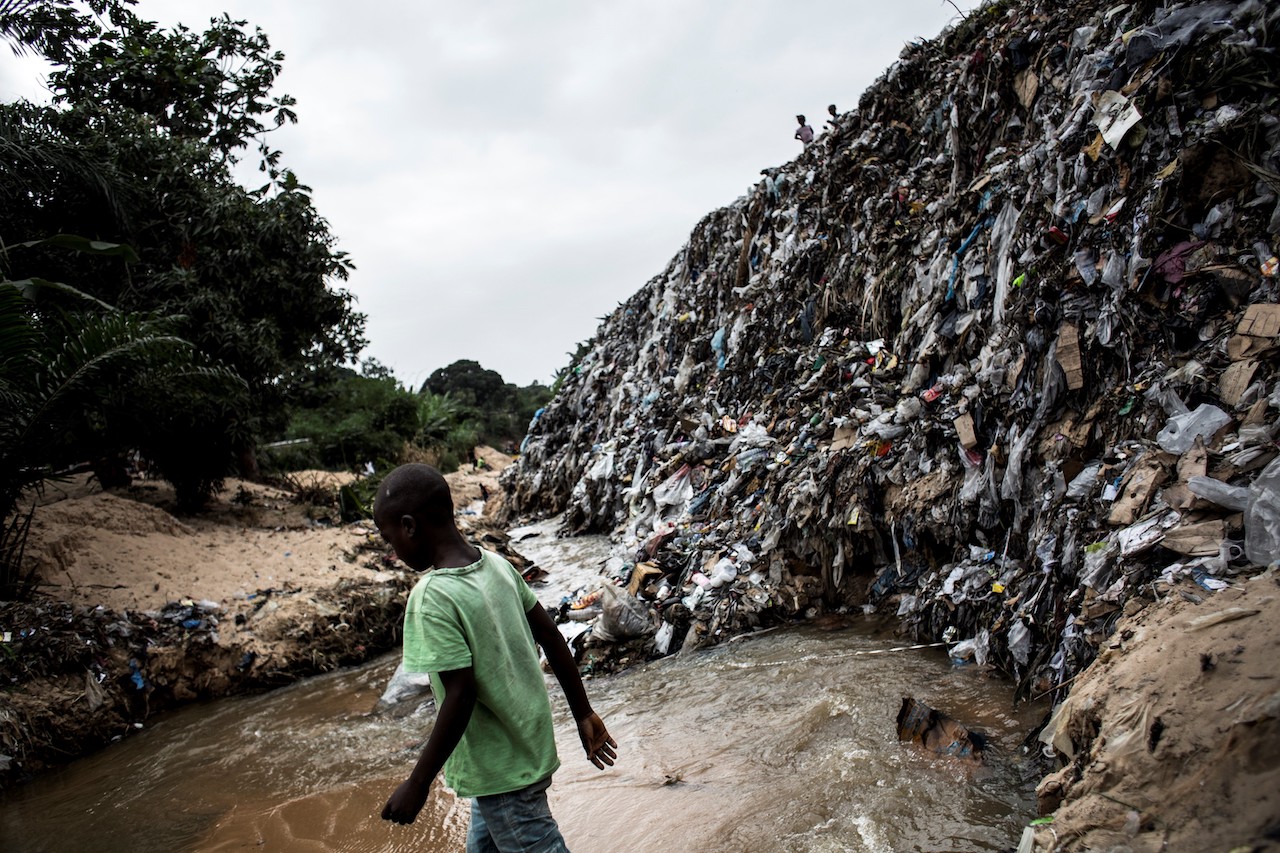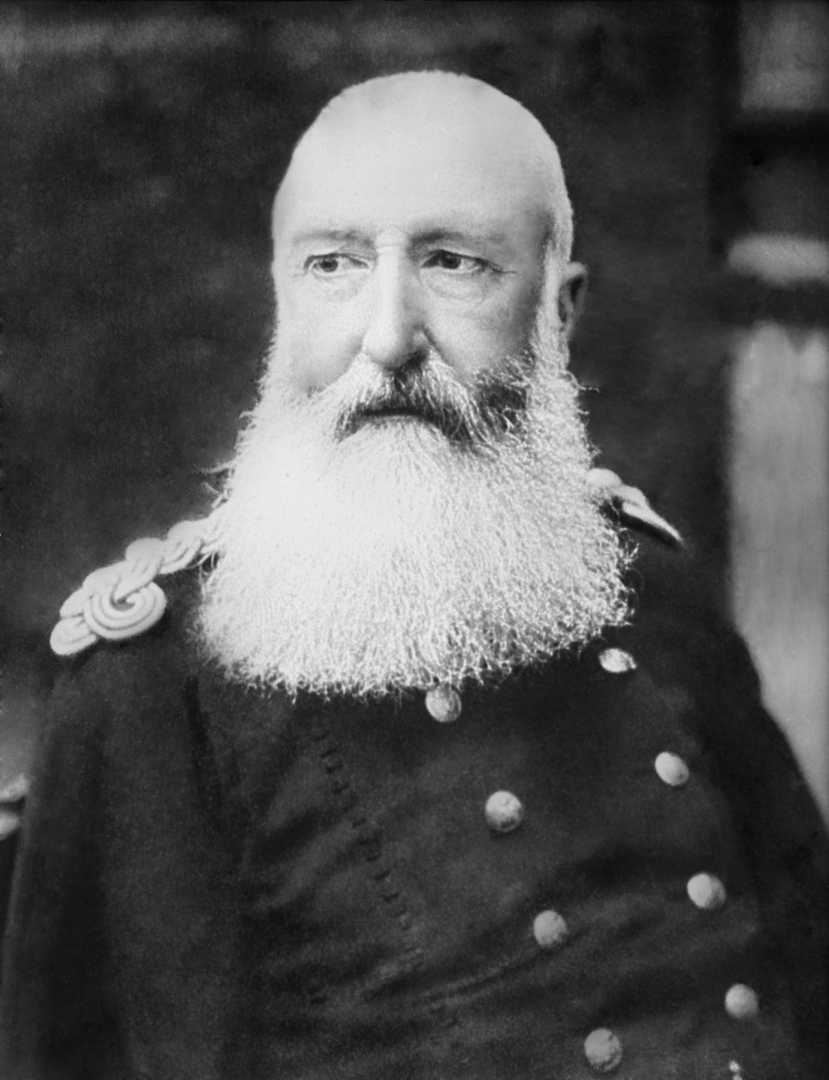The Congo River Basin: Home of the deepest river in the world
The Congo River Basin has a remarkable natural and cultural history.
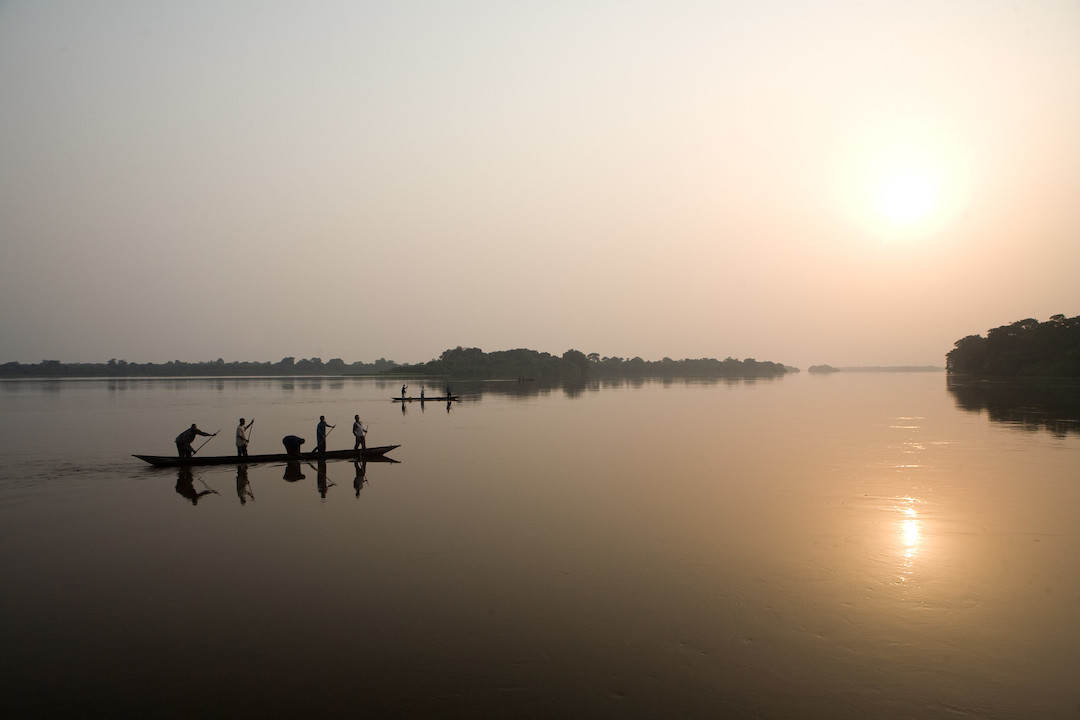
The Congo River is a long, arcing river with a basin that spans nine countries in West-Central Africa. This extensive body of water provides food, water, medicine and transport to about 75 million people in the surrounding basin, according to Yale University's Global Forest Atlas.
The Congo River zigzags across the equator twice as it flows from eastern Africa, through the Congo rainforest, all the way to the Atlantic Ocean, according to Mongabay, a nonprofit environmental science and conservation news site. From its tributaries to where it meets the Atlantic Ocean, the massive river includes rapids, wetlands, floodplains, lakes and swamps.
In addition, the Congo River is the world's deepest recorded river at 720 feet (220 meters) deep in parts — too deep for light to penetrate, The New York Times reported. It's also the second-longest river in Africa, spanning a length of approximately 2,920 miles (4,700 kilometers), according to Phys.org. (Africa's Nile River is the longest river in the world at 4,135 miles, or 6,650 km long.) That makes the Congo River the ninth-longest in the world.
Related: Dying fish revealed Congo is world's deepest river
The region surrounding the Congo River holds an abundance of valuable resources, from ivory to rubber to timber, the BBC reported. "It's this massive freshwater heart of Africa," said Melanie Stiassny, an expert in Congolese ichthyology and curator at the American Museum of Natural History.
Governments have long fought for control of the Congo; the brutal colonial regime of the infamous King Leopold II of Belgium from 1885 to 1908, memorialized in the 1899 novella, "Heart of Darkness," by Joseph Conrad, was one of the bloodiest.
The location and geography of the Congo river system
The Congo River system runs through the Republic of the Congo, the Democratic Republic of the Congo, the Central African Republic, western Zambia, northern Angola, and parts of Cameroon and Tanzania, according to National Geographic.
Get the world’s most fascinating discoveries delivered straight to your inbox.
This long river system has a unique anatomy that divides it into three distinct regions: the upper, middle and lower Congo. The upper is made up of tributaries and rapids, the middle is mostly a steady stream, and the lower consists of gorges and falls, which can make it dangerous.
The tributaries, or the smaller rivers or streams that feed the Congo River, are known as the upper Congo. The Lualaba River forms the Congo River's main tributary. It originates in the southeastern corner of the Democratic Republic of the Congo, on the Katanga Plateau at an elevation of 4,000 feet (1,220 m), and flows northward through the country. It carries the most volume of water to the Congo of any of its tributaries. After 1,800 miles (2,900 km), the Lualaba River feeds into (and becomes) the Congo River.
Another smaller and more remote tributary that flows into the Congo River is the Chambeshi River, which starts in Zambia, and flows for about 300 miles (480 km) until it feeds into the Lualaba River near the border of Zambia and the Democratic Republic of the Congo. This larger network of rivers is sometimes referred to as the Congo-Lualaba-Chambeshi River system.
These tributaries in eastern Africa flow north, and they account for the source of the middle and lower river, Stiassny said. This upper Congo section begins to curve, and forms an arc after it passes through the equator in the central Democratic Republic of the Congo. The river features some major rapids here before reaching the city of Kisangani (formerly known as Stanleyville), one of the largest cities in the Democratic Republic of the Congo.
The upper Congo ends and becomes the middle Congo at these major rapids, which are known as Boyoma Falls (formerly known as Stanley Falls), a series of seven cataracts, or large waterfalls, that are barely passable and span about 60 miles (97 km), according to the Encyclopedia Britannica.
Downstream of these rapids, the river becomes relatively quiet and steady. The middle Congo is about 1,000 miles (1,609 km) long and as wide as 9 miles (14.5 km) in some spots. With its proximity to large cities and ease of navigation, many area residents use this section of the river for boat transport.
After the 1,000-mile stretch of the middle Congo, the river slows to a virtual stand-still for 20 miles (32 km) — a stretch known as Malebo Pool (formerly Stanley Pool). The capital of the Republic of the Congo, Brazzaville, is on the northern river bank, while the capital of the Democratic Republic of the Congo, Kinshasa, sits on the southern bank of Malebo Pool. The pool ends abruptly with the Livingstone Falls, which feature 220 miles (354 km) of rapids. The water plunges over deep canyons at this point, marking the beginning of the lower Congo.
"You can imagine, you're dropping off a plateau and all of this water's plunging down what is actually a narrow gorge. It's a very different kind of river than the rest of the Congo," Stiassny said. "A meandering, slow-flowing river, and then it hits Malebo Pool, and then it just plunges down."
The lower Congo is an approximately 200-mile-long (320 km) narrow channel that empties into the Atlantic Ocean. This is different from most other major rivers, which usually form a river delta, or a network of smaller rivers and streams that spill out into the ocean.
The river's speed surges here because the massive amount of water it's carrying — nearly three times more than the Mississippi River carries — is jetting out of a narrow gorge that's less than 820 feet (250 m) across in some spots. The Congo River carries about 1.25 million cubic feet (35,000 cubic meters) of water into the Atlantic Ocean every second. (The Mississippi River, for comparison, discharges about 590,000 cubic feet (17,000 cubic meters) of water per second on average into the Gulf of Mexico, according to the National Parks Service.)
The Congo River Basin
The land area that drains into the Congo River is known as the Congo River Basin, or the Congo Basin. It's the world's second-largest river basin, at 1.3 million square miles (3.4 million square km), after the Amazon River Basin, which is nearly 3 million square miles (7.5 million square km). For reference, the size of India is about 1.27 million square miles (3.3 million square km).
The land in the Congo Basin is a web of smaller rivers, swamps and forests. Its entire area covers almost all of the Republic of the Congo, the Democratic Republic of the Congo, the Central African Republic, western Zambia, northern Angola, and parts of Cameroon, Gabon and Tanzania. The basin is bordered by the Sahara Desert to the north, the Atlantic Ocean to the south and west, and the East African lakes region to the east.
The Congo Basin surrounds the equator, with the river crossing the equator twice in about a 700-mile-long (1,100 km) stretch. The mix of equatorial climate and massive water source provided by the river provides the perfect ingredients for the second-largest tropical rainforest in the world.
The Congo Basin rainforest is home to an abundance of unique plant and animal life — scientists have estimated that about 10,000 species of tropical plants are found in this enormous rainforest, and about 30% of those aren't found anywhere else in the world, according to the World Wildlife Fund.
The Congo Basin is also the natural habitat of about 400 species of mammals, 1,000 species of birds and 700 species of fish. For comparison, the Nile River has about 800 unique species of fish, and the Mississippi River has about 100.
Some of the more well-recognized and charismatic mammals in the region include forest elephants, lowland and mountain gorillas, chimpanzees, bonobos, okapi, leopards, hippos, manatees and lions. Other rainforest species include the recognizable tsetse flies, African Goliath beetles and Congo African grey parrots.
Related: Images: The amazing chimpanzees of Congo's Goualougo Triangle
Several animal species in this region are endangered, including mountain gorillas, chimpanzees and African wild dogs, mostly due to recent increases in deforestation and wildlife hunting.
The rainforest provides crucial ecosystem services, such as regulating the climate, preventing drought, preserving unique species, and providing a source of food and medicine to local communities, said Alexandra Tyukavina, an assistant research professor of geographical sciences at the University of Maryland in College Park, Maryland.
The Congo Basin rainforest is so valuable for sequestering carbon dioxide and producing oxygen that scientists have called the rainforest the world's "second lungs," following the Amazon rainforest, according to the European Space Agency.
Congo River Basin's population
Humans have lived in the Congo River Basin for 50,000 years, and the area is now home to approximately 75 million people, including 150 distinct ethnic groups, according to the World Wildlife Fund.
It's the home of prominent hunter-gatherer groups, who are often referred to as Pygmies: the Ba'Aka, BaKa, BaMbuti and Efe, among others. The groups in the area that aren’t hunter-gatherers have relied on subsistence agriculture and bartering for goods for thousands of years, according to a 2015 review published in the journal Current Anthropology.
Archaeological evidence suggests that some tribes began to form villages along the Congo River around 4,700 years ago. Remnants of iron tools and pottery suggest that some of the groups settled along the river around 5,000 years ago, when populations of Bantu-speaking peoples migrated from the savannahs of West Central Africa throughout the Congo Basin — an event known as the Bantu expansion.
Threats to the Congo River Basin
Deforestation, primarily as part of modern agricultural practices, is the main environmental threat to the Congo River Basin and its rainforest.
"It's mainly slash-and-burn agriculture, when people clear back and forth manually and clear-cut down the trees. And then they burn those logs to fertilize the soil with the ashes and grow crops there," Tyukavina said.
Industrial logging is another driver of deforestation in the region, according to Mongabay.
In addition, as the population in the region has grown at a rate of about 1.7 million people each year, according to the World Wildlife Fund, so has the demand for food. Bushmeat, or meat from wild animals like bats, monkeys, rats and snakes, which hunter-gatherer groups have traditionally relied upon as their main source of food now faces a new threat: overhunting.
"Bushmeat is a good, important source of protein for people throughout the Basin," Tyukavina said. But commercial hunters have increasingly targeted animals like monkeys and antelope for the commercial bushmeat trade. These midsize mammals are unable to reproduce fast enough to compensate for the high rate of hunting, causing their populations to decline.
Elephants are also at risk from poachers looking to profit from the international ivory trade.
Related: Elephants vanish in Congo reserve
The history of the Congo
The region first became known as the "Congo" in the late 1300s, from the kingdom of Kongo, an independent state that ruled the area around the mouth of the river from the late 1300s through the 1800s, according to the Encyclopedia Britannica.
From 1971 to 1997, the Congo River was known as the Zaire River, during the reign of Democratic Republic of the Congo's dictator Mobutu Sese Seko, who changed the entire country's name to Zaire, the Atlantic reported. (Zaire is the Portuguese adaptation of the Kikongo word nzere or nzadi, which means "river that swallows all rivers.")
The Congo has a dark and storied history. Because of all the resources that can be found along the Congo (ivory, rubber, timber and rare metals such as cobalt, copper, diamond, tantalum, tin and gold), the region has long been the home of major conflicts and European colonialism.
In the late 1400s, Portuguese explorers arrived in the Kongo kingdom and established trade outposts along the Congo River, according to the BBC. By that time, slave trade had existed in Africa for centuries — some historians estimate that African kingdoms sold captive prisoners of war to other African and Arab groups starting around 1000 B.C., according to the Encyclopedia of Migration's "Trans-Saharan Slave Trade" (Spinger Link, 2013). Portuguese traders quickly entered into the slave trade and began to send African slaves to plantations that other Portuguese traders had established on islands off the African coast, including Madeira and the Canary Islands, according to the United Kingdom's National Archives.
A couple hundred years later, throughout the 1600s and 1700s, European traders from other countries, including Denmark, England, the Netherlands, Scotland and Sweden, came to the Congo region to seize African slaves for the trans-Atlantic slave trade.
In 1885, King Leopold II of Belgium took control of the Congo region after signing a treaty with other European nations at the Conference of Berlin, according to the Encyclopedia Britannica. He called the region the "Congo Free State." According to historians, Leopold ran a mercenary force that used murder and torture to force the native population to extract and export the region's ivory, rubber and other natural resources. Historians estimate that from 1885 to 1908, approximately 10 million people in the region died at the hands of the Belgians, History Today reported.
And the legacy of Leopold's cruel regime has haunted the region since.
"It was only about 110 years ago when this [King Leopold's rule] ended, so there are still people in the region whose grandparents were directly affected by this," Tyukavina said.
After Leopold's death, the region was annexed by the government of Belgium and ruled as the Belgian Congo from 1908 until 1960. The Belgian Congo leaders forced Congolese people to build road and railroad infrastructure for free, while plantations and mining companies used indentured laborers, or forced laborers who were able to later buy their freedom, according to the Encyclopedia Britannica.
Congolese resistance movements had been challenging European colonial rule since the 1920s, but it wasn't until 1958 when the nationwide Congolese political party, the Congo National Movement, rose to prominence. Skirmishes between Belgian forces and the Congolese broke out over the next year, and Belgium yielded to the nationalist forces.
In 1960, the country became independent, and political leader Joseph Kasa-Vubu became the first president of the Democratic Republic of the Congo (then called the Republic of the Congo), serving from 1960 until 1965, according to the Encyclopedia Britannica. The fledgling independent government was divided and weak, and became a proxy conflict (called the "Congo Crisis") amid the Cold War between the United States and the Soviet Union, with each country supporting opposing Congolese political factions, according to the Atomic Heritage Foundation.
In 1965, Mobutu Sese Seko, a Congolese military officer, seized power through a coup, using his command of the Congolese army. He developed a totalitarian regime, amassed a large personal fortune and became notorious for giving his corrupt friends and allies important positions in government. He was finally ousted more than 30 years later, in 1997, by a rebellion in the eastern part of the country. At that point, a civil war broke out and lasted until 2003, the BBC reported. In 2006, the newly instated government held democratic elections, the United Nations reported.
But the region is still not entirely peaceful. The area continues to be haunted by ethnic conflicts, economic inflation, political corruption, European colonialism and the Ebola virus. Because of so much political unrest, traveling along the Congo is unsafe in some areas. In January 2020, the Democratic Republic of the Congo issued a do-not-travel warning for certain provinces around the river due to the threat of ambush, armed robbery and kidnapping.
Additional resources:
- Read more about one researcher's quest to study the Congo's native Bonobos, from the Smithsonian Magazine.
- Learn more about the threats facing the Congo Basin rainforest, from the New York Times.
- Get an inside look at the Republic of the Congo in this video produced by National Geographic.
Holly Secon is a freelance science writer based in California. She has worked as a science writing fellow at Business Insider, and was an associate editor at GreenBiz. Previously, she worked in communications at Twitter and at the National Writing Project. She holds a bachelor's degree in Media Studies from UC Berkeley.



